At the furthest most northerly reach of the Scottish highlands lies a land of rugged terrain, ferocious seas and infinite horizons. It is a land that is as old as time, full of secrets and limitless rewards for any who dare adventure there. From the towering peaks of the Duncansby Stacks to the stunning views of the sea beyond, this is a spot in Scotland that cannot be missed on any North Coast 500 road trip.
On the very northeast corner of the British mainland lie two beautiful sights that if you are touring the NC500 in Scotland then you would be a fool to miss them. The Duncansby Stacks and Lighthouse are a hugely popular tourist attraction in this area, drawing visitors from all over the world to admire their humbling beauty.
Plan your trip to the Duncansby Stacks and Lighthouse with this complete guide to the area, including the fascinating history of the region, as well everything else there is to do nearby.
No time to read now? No problem, save a pin to your Pinterest board for later!

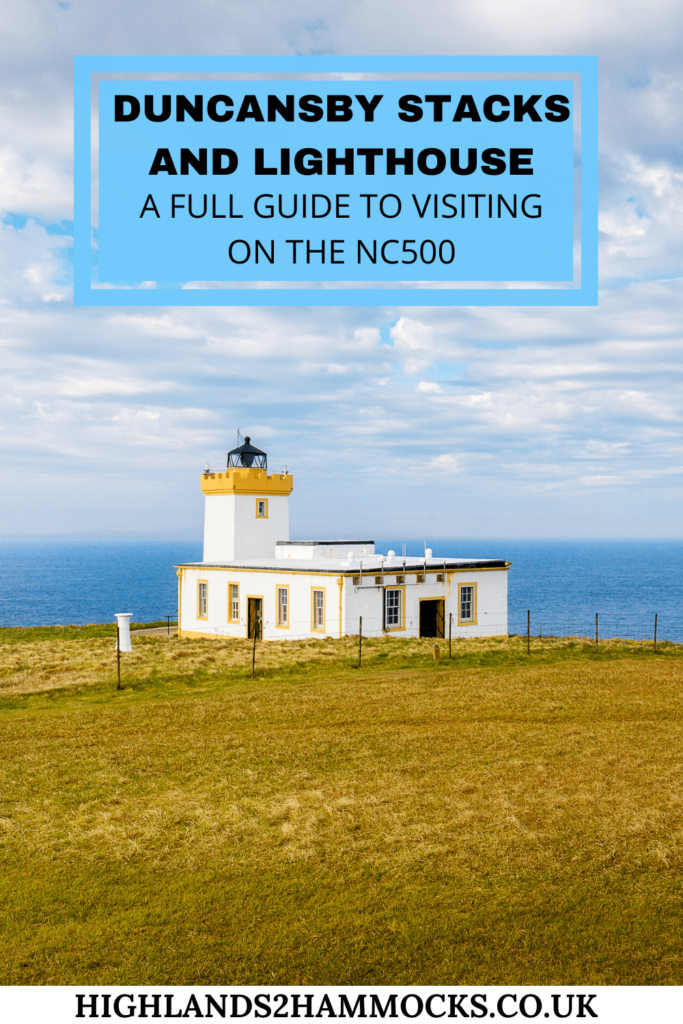
The Duncansby Stacks and Lighthouse
Perched off the northeast corner of the British mainland lies the natural wonder of the Duncansby Stacks, as well as the lighthouse that guards these perilous shores. These 60m sea stacks tower high above the ferocious and unpredictable water of the North Sea. It is a land truly carved by time and stands as a monument to the destructive power of nature in this part of the world.
Table of Contents

Planning Your Trip
We use the below booking platforms to plan our trips. We hope you find them useful too!
Where to Stay near the Duncansby Stacks
There is a wide range of accommodations around the NC500 route, so you will not be short on options. Depending on how long you are spending in each area will depend on how long you spend in that location. It is worth bearing in mind that some accommodations will require you to stay a minimum number of nights so it is worth researching this when you are planning your North Coast 500 itinerary.
Our new book North Coast 500 Where to Eat and Stay shares the best places to eat and stay around the NC500 and includes whether places are dog friendly, accessible, have wifi and EVC and whether they cater to dietary requirements.
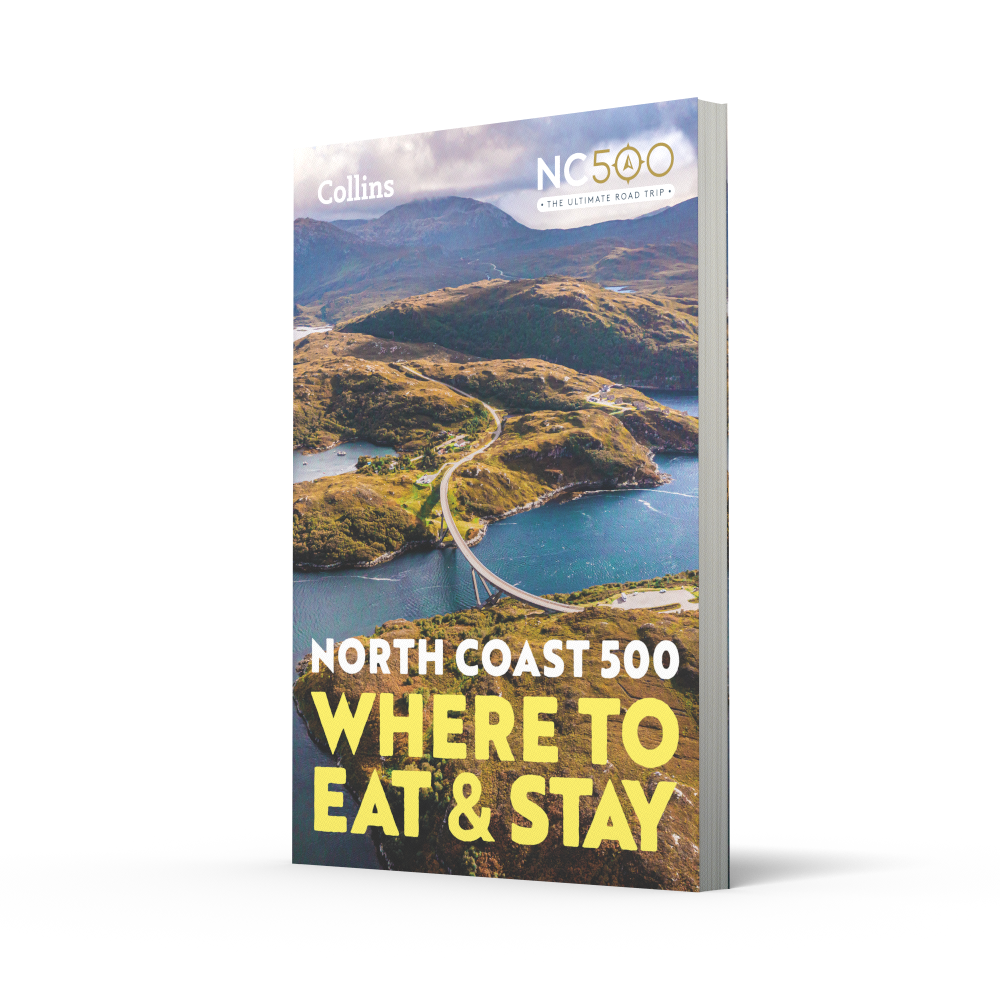
History of the Duncansby Stacks and Lighthouse
The Duncansby Stacks lie just off the shore of Duncansby Head on the most northeastern point of mainland Britain. These towering sea stacks are believed to have stood in this position for the last 6000 years, slowly eroding away due to the raw power of the North Sea. The water in this part of Scotland has proven itself treacherous over the years, which has resulted in the construction of the nearby Duncansby Head Lighthouse.
Built in 1924, this lighthouse remained home to a keeper for over 70 years, until in 1997, it was fully automated and no longer required a resident. Soon after this automation, the keepers housing quarters showed signs of damp and asbestos and were subsequently removed. The lighthouse tower remains here to this day, still functional and protecting boats from the crags and cliffs of this destructive span of water.
The danger in this part of the coastal waters comes from the characteristics produced by the way the Atlantic and North Seas meet, producing eddies and flows that reach up to 10 knots. It is for this reason that this part of the coastal region of Scotland became known as the “Hell’s Mouth”.
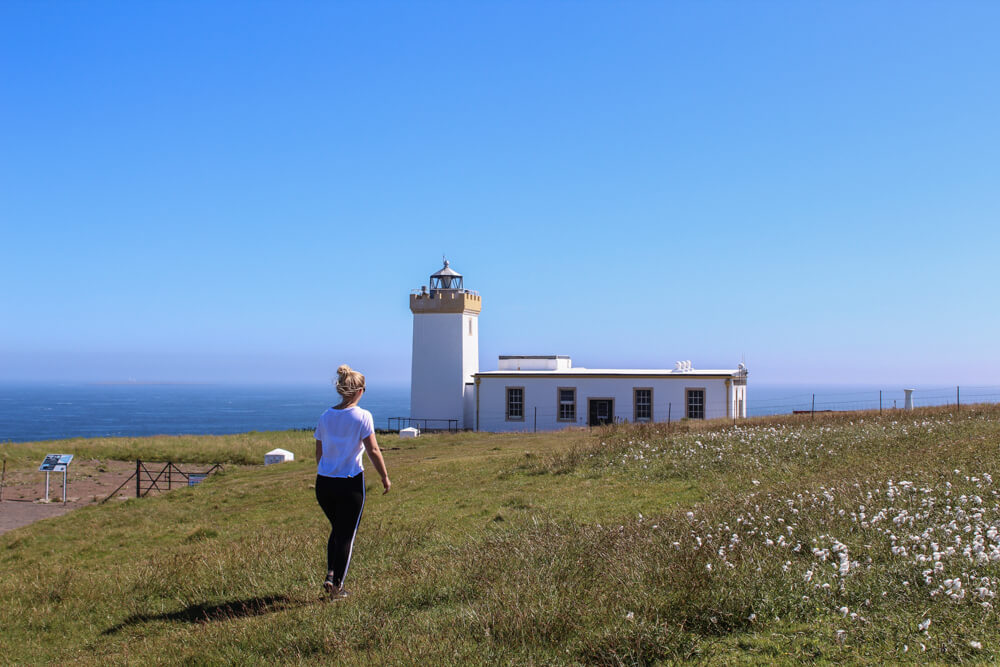
Where are the Duncansby Stacks and Lighthouse?
The Duncansby Lighthouse sits just to the west of John O’Groats, on the northeastern corner of the British mainland. The stacks themselves sit not far from this lighthouse, around 500m south along the cliffside.
By parking at the lighthouse and walking over the hill with the sea on your left, you will reach the viewing area that offers the best view of the Duncansby Stacks.
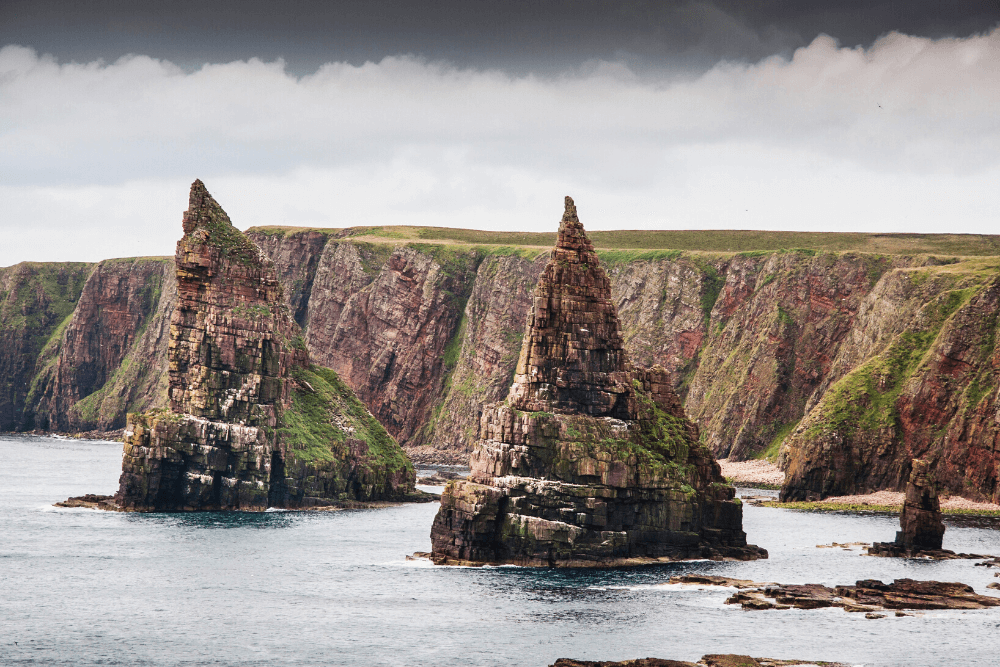
How to Get to the Duncansby Stacks and Lighthouse?
The easiest way to get to the Duncansby Stacks is to follow signposts across Scotland to the town of John O’Groats. If you are driving north, ensure the sea is on your right and if you are driving East, keep it on your left. Eventually, you will reach the northeastern tip of the country and you will find the beautiful Duncansby Lighthouse.
Once you have reached John O’Groats, follow signposts for Duncansby Head and continue on for a further 2 miles until you reach the parking area for the lighthouse. This carpark is free and is an excellent place to get out and stretch your legs, admiring the stunning cliff views all around.
When you are ready, head up over the hill that lies to the right of the lighthouse and follow the coastline around until you reach the Duncansby Stacks viewing area. You will not miss the stacks as you come up over the hill, as they tower high above the sea in the distance.
It is up to you whether you then wish to continue south closer to the stacks or simply admire them from a distance before returning to the lighthouse.
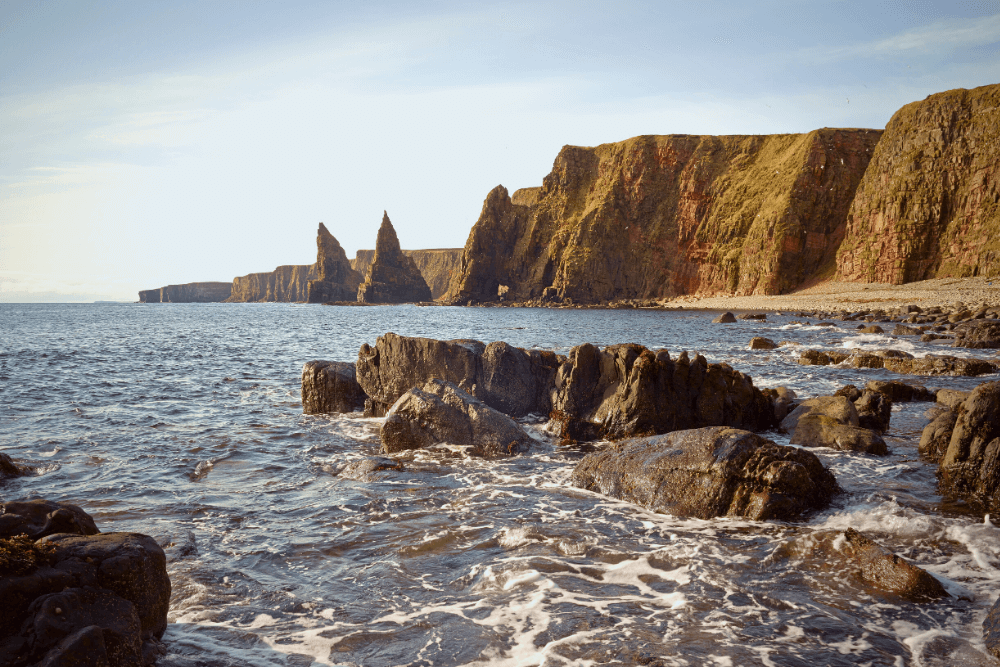
What to Expect at the Duncansby Stacks and Lighthouse?
In terms of amenities, there is not very much to offer at the Duncansby Lighthouse. It is not possible to go inside the lighthouse as nothing remains apart from the automated light tower and there are no other buildings, cafes or even toilets.
If you wish to grab a bite to eat or use a bathroom, we highly recommend continuing on to the John O’Groats signpost that lies just outside the town centre. Here you will find the visitor centre, toilets and cafes for food and drinks.
When you do visit this part of Scotland, make sure you keep an eye out for the numerous puffins that call these sea cliffs home. When we were here there were hundreds of them, all playing and resting on the sides of the cliff.
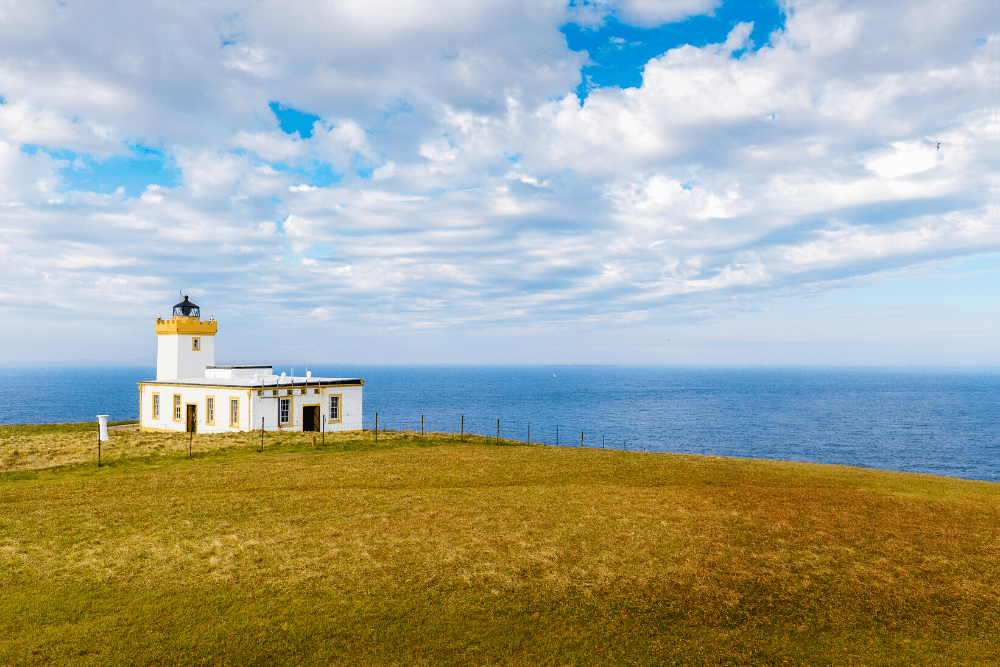
When to Visit the Duncansby Stacks and Lighthouse
There is no prominent time of year or even day that is the best to visit the Duncansby Stacks, aside from the obvious golden hours of sunrise or sunset. If you are an early bird then these stacks are an obvious spot to come and start the day, with the sun rising over the sea to the east, slowly illuminating the towering stacks.
During the busy season of July and August, tour buses pile in and out of this spot all day long, unloading coaches of tourists who all scramble for a quick photo before they are herded off to the next spot. It is an obvious suggestion that you should try your best to avoid these busy months to not only protect the natural habitat of Duncansby Head but to also allow you to enjoy your trip.
We toured the NC500 in June before the majority of the schools went on holiday across the UK, and the entire NC500 route was almost empty. We recommend touring this epic road trip either during April/May or after summer in September.

Nearby Sights to the Duncansby Stacks and Lighthouse
There are loads of other beautiful sights on the North Coast 500 that are nearby to the Duncansby Stacks, both to the west and further to the south.
Visit Castle Sinclair Girnigoe
Further to the south of the Duncansby Stacks sits one of Scotland’s most spectacular castle ruins, the Castle of Sinclair and Girnigoe. Perched on the edge of the sea cliff, this 500-year old castle ruin has a simply fascinating history of battles, prosperity and eventual abandonment.
Just imagine what it must have been like 500 years ago, sitting in the towers of this majestic castle and looking out beyond the endless horizon. What must they have thought lay beyond that distant blue line? Castle Sinclair Girnigoe is one of our favourite castles on the North Coast 500.

Visit the John O’Groats Signpost
One of the most popular tourist attractions on the north coast of Scotland, this famous John O’Groats Signpost is a definite photo-stop on the NC500 road trip. Marking the end of the countrywide route from its sister signpost in Lands End, Cornwall, this signpost is a welcome sight to the weary travellers who have made this monumental journey.
If you are touring the North Coast 500 then this signpost should be a definite stop on your road trip, as it is the perfect place to stretch your legs, snap a photo and grab a bite to eat.
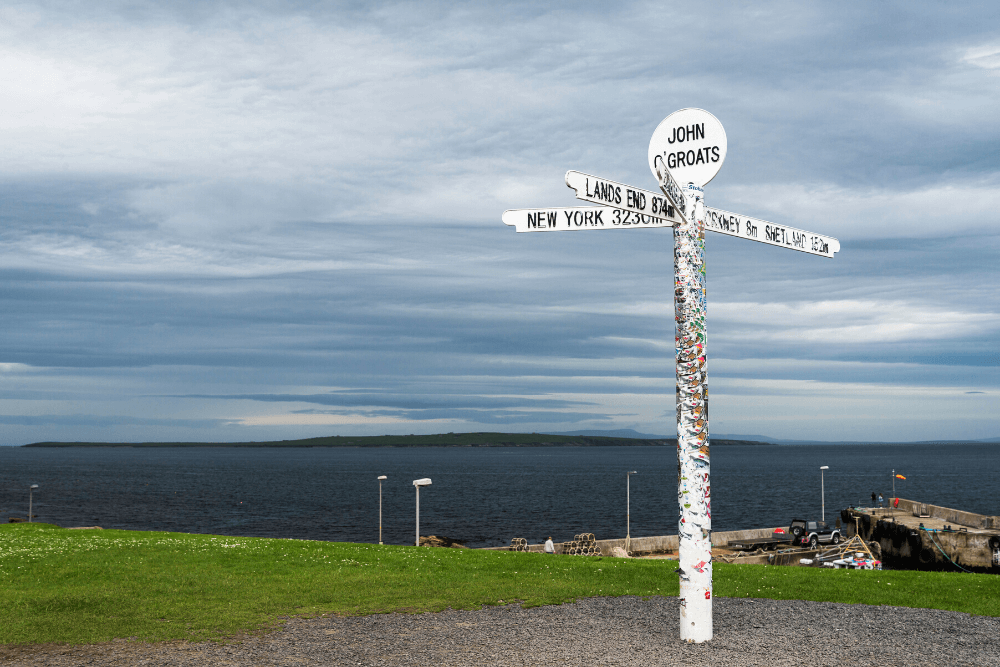
Bay of Sannick
A hidden gem in Caithness, the Bay of Sannick is another perfect example of Scotland’s beautiful golden beaches, guarded by rugged cliffs and breathtaking sea views. This beach sits just to the west of Duncansby Lighthouse and is often overlooked by visitors racing onto the next stop on the North Coast 500.

Before You Leave on the North Coast 500
Before you head off on your trip around the NC500, there are certain things you will need to get organised to ensure a smooth trip. These include how to get around the route, including being aware of single track roads, etc., what to pack for Scotland, where to stay along the route and what travel insurance to book.
How Do I Get Around?
Given the remote location of the NC500 and the majority of the sights along the route, the best way to get around this road trip is by driving. There are of course other methods that are still popular, such as cycling and hiking, however, if you have a short amount of time on the route, neither of these are very suitable.
As for public transport, the use around the NC500 is understandably difficult due to how remote each location is, however, with the increasing problem of congestion along the route, this is a good option to research if you have time. If it is something that interests you, you can read a public formed itinerary of how to get around the NC500 by public transport over here.
If you are looking to rent a cosy, reliable and luxurious campervan for your trip along the NC500, we highly recommend hiring through Bunk Campers. We toured with these guys around the up-and-coming Heart 200 road trip in Scotland’s central highlands and could not believe the comfort and customer service we experienced with their vans.
Browse the full range of vehicles on offer at Bunk Campers over here.
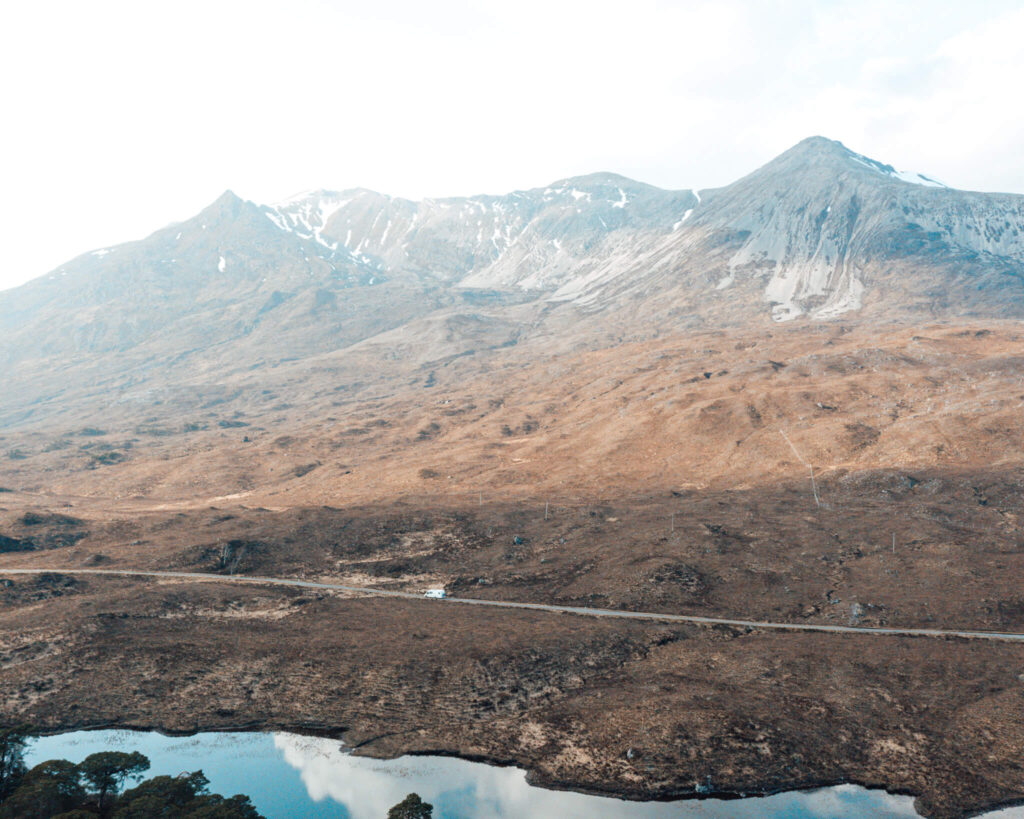
Where to Stay on the NC500
There is a wide range of accommodations around the NC500 route, so you will not be short on options. Depending on how long you are spending in each area will depend on how long you spend in that location. It is worth bearing in mind that some accommodations will require you to stay a minimum number of nights so it is worth researching this when you are planning your North Coast 500 itinerary.
Our new book North Coast 500 Where to Eat and Stay shares the best places to eat and stay around the NC500 and includes whether places are dog friendly, accessible, have wifi and EVC ad whether they cater to dietry requirements.
The remoteness in the highlands of Scotland will leave you with little choice of accommodation in each location along the NC500, however, there are still enough options to choose from to ensure a comfortable trip. These are mostly in the shape of B&Bs, Airbnbs, converted cottages and other quirky accommodations.
Depending on how adventurous you are, there may be more accommodation choices than just the above, often with an even better view. Caravan and camping sites are abundant along the NC500, drawing camping enthusiasts from all over the world. For some of the most spectacular bedside scenery along the North Coast 500, we recommend packing a tent and getting in touch with nature for the week.
As we travelled along the North Coast 500, camped in our trusty Vango tent on a mixture of campsites and wild sites. Wild camping is a fantastic way to enjoy the beauty of the highlands, however, it must be done respectfully. Read our full guide to Wild Camping if you wish to give it a go so you know everything you need to for a comfortable and sustainable trip.

What Should I Pack?
When it comes to packing for a trip to Scotland there is one item of clothing that you are going to need all year round: a waterproof. It rains in Scotland on average 250 days a year, meaning that during your 5-day Heart 200 road trip you will probably experience at least a drizzle of rain. Due to this, the number one item on any Scotland packing list is a good waterproof jacket.
As for the rest of the year, the temperature in Scotland and the central heartlands is reasonably mild for most of the year. During the winter months, you will most likely experience snow, however, temperatures usually sit around freezing, so it is not too cold. For your reference, the average temperatures in Scotland are listed below during each season.
Spring (March, April, May) – 5-10 degrees C
Summer (June, July, August) – 15 degrees C
Autumn (September, October, November) – 5-10 degrees C
Winter (December, January, February) – 0-5 degrees C
As you can see, the weather never really gets above the teens, with anything over 25 degrees C considered a heatwave. The best way to pack for your trip to the highlands is with layers that can be added and removed as you need them. You will definitely need a hat and gloves during the colder months and will most likely need sunscreen to protect you on the long days in the open.
We would also recommend taking our NC500 guidebooks with you on your journey. This will help you plan your itinerary and ensure that you don’t miss out on any of the best places to go on the NC500. Our Destination NC500 guidebook is well paired with NC500 Where to Eat and Stay and you can buy the combo here.
Given the beautiful sights and scenery that you are no doubt going to see around Scotland, we highly recommend packing a good camera for your trip. If you want to read more about the cameras we use and why we love them, check out the link below.
Photography Equipment
Main Photography Camera – Sony A7v Mirrorless Camera and Sony A7iii Mirrorless Camera
Microphone – Sony Mic ECM-B1M
Main Lens – Tamron 17-28mm f/2.8
Zoom Lens – Tamron 70-180mm f/2.8
Camera Tripod – ZOMEI Z669C Camera Tripod
Gorilla Pod – JOBY JB01507-BWW GorillaPod
Action Camera – GoPro Hero 11 and Insta 360 One RS
Drone Camera – DJI Mavic Pro 3
Camera Bag – Wandrd PRVKE 41L and The Nest by Tropicfeel
Phone Tripod – Manfrotto MKPIXICLAMP-BK, Mini Tripod with Universal Smartphone Clamp
Sturdy Phone Tripod & Selfie Stick – ATUMTEK 61″ Selfie Stick Tripod, Sturdy Phone Tripod Stand with Wireless Remote
Hard Drives – LaCie Rugged Mini, 5TB, 2.5″, Portable External Hard Drive
SSD – SanDisk Extreme Pro 1TB Portable NVMe SSD
Travel Adapter –Worldwide Travel Adapter Universal Travel Plug with 4 USB Ports+Universal AC Socke
What is the Best Travel Insurance for the North Coast 500
I know travel insurance is the least enjoyable thing to purchase and look at when you’re planning a trip, however, you wouldn’t want to be without it in the event that something happened. Accidents can happen anywhere and the extortionate medical bills will ruin your trip if you are not covered.
To ensure you have a stress-free trip with no worries about potential medical bills, make sure you cover yourself when you travel. We can recommend using SafetyWing, a backpacker-friendly and cheap insurance company that provides good coverage and support. It is also nomad-friendly, unlike most other insurance companies, meaning you do not need to worry about being out of your home country for too long.
Get a quote for your travel insurance right here and get covered!
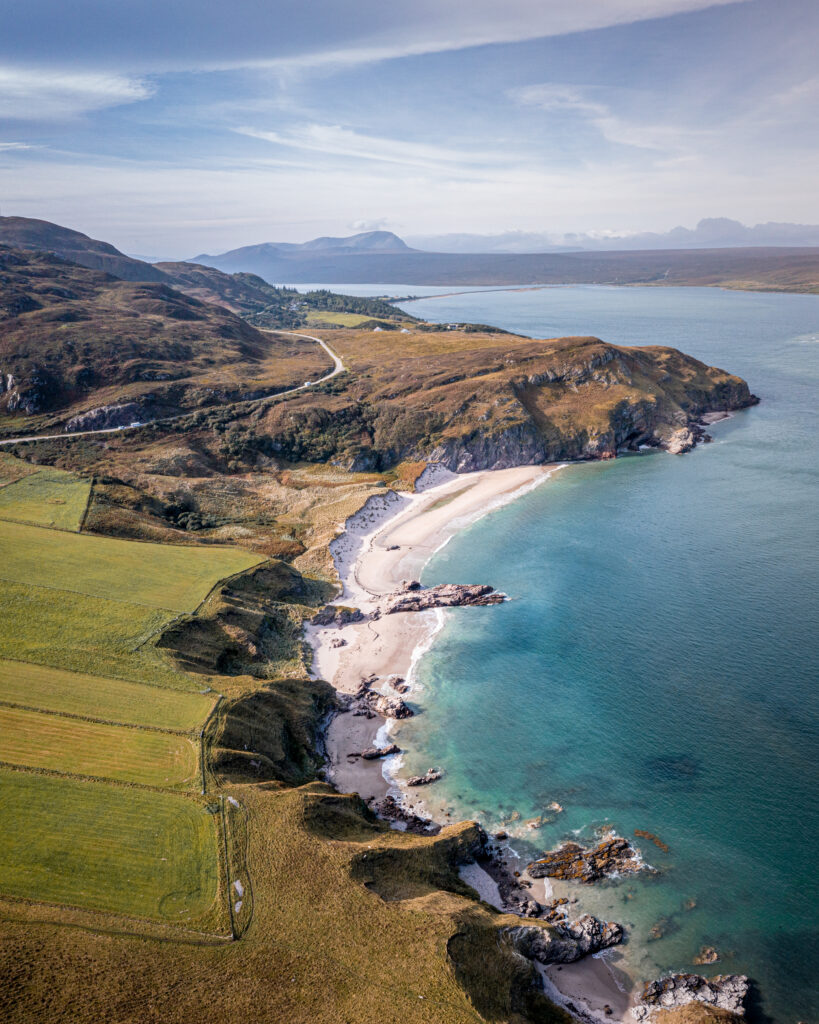
So there you have it, a complete guide to visiting the Duncansby Stacks on the NC500. If you have visited the NC500 recently, let us know what you thought of it.
As always, sharing is caring so make sure to share this guide with your family and friends and inspire them to head off on their own North Coast 500 adventure. If you are planning the trip for yourself, make sure you have a look at the rest of our Scotland content for more inspiration to our beautiful home country.
When you set off on your own adventure, be sure to tag us in your photos on Instagram and we will share them with the rest of our community. In the meantime, why not follow us over there to see what we are currently up to and keep up with us on our Instagram Stories.
Now Read:
This article may contain affiliate links that provide us with a small income. For more information read our Affiliate page.
Pin it for later!




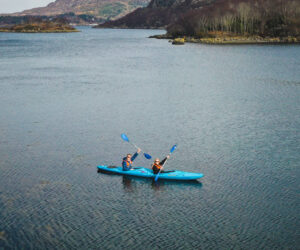
Pingback: Visit the John O'Groats Sign Post - Britain's Most Northerly Point | highlands2hammocks
Pingback: Castle Sinclair Girnigoe Ruins, NC500 - WHAT, WHERE AND WHY.. | highlands2hammocks
Pingback: 7 Day Highlights Itinerary of the North Coast 500 - Highland Overland
This guide is fantastic! The Duncansby Stacks and Lighthouse look breathtaking, and I can’t wait to visit. The tips on the best viewpoints and timings are incredibly helpful. Thanks for sharing such detailed insights!
What a fantastic guide! The Duncansby Stacks look absolutely breathtaking, and your tips on visiting the lighthouse are incredibly helpful. I can’t wait to explore this stunning part of Scotland! Thank you for sharing your insights and beautiful photos!